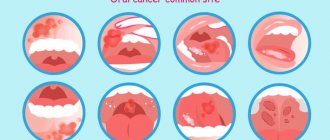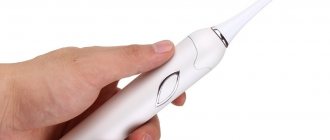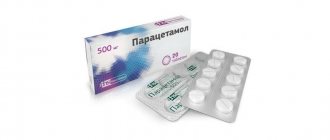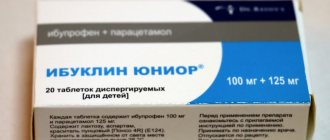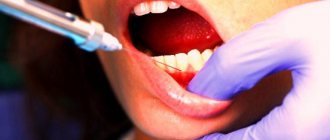24.11.2019
An allergy is an increased sensitivity to certain substances that causes painful symptoms. An allergy to a filling is quite rare, but still, each human body is special, and can react differently to a filling composition that is foreign to it. Any material introduced into the human body from the outside can cause a toxic reaction.
How does an allergy to a filling manifest itself and what can it be confused with?
An allergic reaction to a filling is manifested by redness and swelling of the gums, aching pain, and an atypical taste in the mouth. But these symptoms may indicate the consequences of treatment (especially if it was carried out with the removal of a nerve or surgical opening of the gum), and an allergy caused by an anesthetic medication. In these cases, the unpleasant sensations disappear within a few days, usually two or three, less often a week.
If pain, redness and swelling do not subside over a longer period of time, this indicates an allergy to some component of the filling material. Symptoms may subside when taking an antihistamine (anti-allergy) drug, but then appear again - because contact with the allergen does not stop. Moreover, the symptoms worsen, possibly an increase in body temperature, the appearance of a rash and itching, and the spread of swelling to the facial area.
Allergy symptoms in dentistry
A drug allergy manifests itself in the form of skin lesions or urticaria.
With a contact type of allergy, swelling of the oral mucosa occurs, itching, burning, and even stomatitis may occur.
The most severe manifestation of an allergic reaction in dentistry is anaphylactic shock. Initially, a person feels a slight tingling sensation on the skin of the face, later there is general weakness and, finally, severe pain in the chest area. Inaction in this situation can result in death for the patient, since the likelihood of swelling of the airways in this case is quite high. In addition, severe heart failure and seizures may occur.
Allergy to temporary filling
A temporary filling is installed for a period of several hours to 2-3 weeks, mainly for diagnostic purposes - to determine how infected the pulp (neurovascular tissue of the tooth) is. If pain persists after placing the filling, then the dental nerve is inflamed and is removed. Also, a temporary filling can be intended to fix a medical lining in the dental cavity.
For temporary filling, dentists use mineral cements of various compositions, polymer one-component pastes, and dentin paste. Each component of the materials can cause an allergy, although the likelihood of this is very, very small. In any case, when replacing the temporary filling with a permanent one having a different composition, contact with the possible allergen will stop.
Innovative tooth filling, 3D technology
Durable and high-quality restoration is ensured by advanced technologies. In dental practice, the hot gutta-percha technique or three-dimensional filling has proven itself to be excellent.
- 3D technology provides treatment of dental canals with heated thermoplastic material.
- In this case, maximum sealing of the central and side branches occurs.
- The method minimizes tissue trauma, infection, pain and significantly increases the service life of the restored tooth.
For innovative filling of dental canals, modern equipment is needed, for example, the German BeeFill 2 in 1 device. With its help, the dentist carries out depulpation, cleans the canals from bacteria, nerves and fills them with hot gutta-percha.
The technique guarantees perfect sterilization, carefully seals all branches and tightly seals the dentinal tubules.
3D technology provides treatment of dental canals with heated thermoplastic material
Allergy to permanent filling
A permanent filling, if done well by a dentist, will last for many years and even decades. A wide variety of materials are used for fillings - from phosphate cement, usually used in the provision of free dental care, to the most modern light-curing composites of complex composition. And not a single filling material, cheap or expensive, unfortunately, excludes allergies. Despite the fact that entire corporations are trying to develop a completely hypoallergenic composition for fillings, the ideal does not yet exist. The individual reaction of the body is unpredictable.
Eliminating problems on the front teeth with light fillings
In case of complex deformations and destruction of the anterior teeth, the selection of individual restorative procedures is required to improve the aesthetics of the smile area.
To ensure that the area being restored does not differ from adjacent dental units, a special light-colored filling material is used, which has increased strength and quality characteristics.
What is
The light filling has a significant difference from other composite materials, which consists in the ability to harden under the influence of special ultraviolet radiation, thanks to a substance with increased sensitivity to light rays.
Typically, curing occurs at a wavelength of 450 nm, at which the light beam has a blue tint. The process of formation of a polymer, which is a high-molecular substance, occurs within 1 minute.
Under the influence of ultraviolet rays, it breaks down into oxidants, forming molecules with incredible chemical activity, which will trigger the polymerization process. The filling may contain such composites as:
- macro-filled;
- microfilled;
- nanohybrid;
- minifilled.
The larger the particles of the composite, the higher their filling, and this significantly increases the resistance to abrasion, however, it does not preserve the aesthetic appearance of the filling.
Recent developments in nanotechnology have made it possible to use innovative filling materials that improve the artistic results of treatment and filling of anterior teeth.
Types of materials for fillings
What specific components can cause an atypical reaction in the body? The material that often causes allergies is amalgam. It is an alloy of mercury with silver and other metals, now used very rarely, despite its strength. This filling material has lost its position not only because of toxicity - contrary to popular belief, amalgam does not release dangerous amounts of mercury into the human body, it is quite safe. But too many allergic reactions to it have been recorded, and an atypical reaction does not appear immediately (the so-called “delayed” symptoms), but an allergy to metals is one of the most severe. In European countries, the use of amalgam in dentistry is prohibited.
Gold fillings are also a metal alloy; an allergy to such a filling is possible, but it is extremely rare.
A filling made of acrylic plastic (methyl acrylate), a material that not so long ago was considered the newest alternative to metals. But now acrylic plastic is rarely used by dentists, it is short-lived and toxic, and in terms of the number of allergic reactions it surpasses all filling materials - approximately a third of patients had an atypical reaction to this material.
Chemical-curing composites are obsolete, developed in the 70s of the last century, but, along with cement fillings, they are used in free dentistry. The composition of synthetic resins and quartz powder is mixed immediately before installation in the oral cavity and hardens within a few minutes. Resin, which is an artificial material, is a strong allergen.
Light-curing (photopolymer) filling is a composite that hardens under an ultraviolet lamp. This material, which appeared in dentistry relatively recently, consists of a polymer, a mineral filler (glass ceramic or silicon dioxide) and a binder. Manufactured to meet hypoallergenic requirements. The American Dental Association has recorded only a few dozen cases of allergies to light fillings - this is a tiny percentage of the number of patients treated.
Ceramic (porcelain) filling. Ceramics is considered completely hypoallergenic, or, as cautious doctors say, a material to which no allergies have been observed. But a ceramic filling, or inlay, is glued to the tooth with adhesive glue and fixed with composite cement, and these materials are possible allergens.
Causes of allergic reactions
Allergies can be caused by both metal and plastic structures.
- Alloys of nickel, chromium and cobalt are included in the group of allergens and can provoke severe allergic reactions. Unfortunately, these alloys are part of many orthopedic designs.
- Another group of allergens is a protein monomer, which is formed during the manufacture of polymers, for example, acrylic. The higher the monomer concentration, the stronger the reaction. Normally, its presence in acrylic plastic should not exceed 0.2%.
- The reaction can be caused by dyes and plasticizers (substances that reduce the formation of micropores) included in the restoration.
What to do if you suspect an allergy?
Do not self-medicate, do not use traditional medicine methods that are useless in this case. Constant exposure to an allergen can cause serious complications.
If pain and swelling persist, consult a dentist and rule out the possibility of an inflammatory process associated with dental intervention. If the dentist, after examining the oral cavity, confirms that the treatment was carried out correctly and the symptoms are not related to the manipulations performed, it is necessary to visit an allergist-immunologist to take a test to sample the filling material used for treatment and to select an alternative material.
Allergy and root resorption
Root resorption is a common side effect of orthodontic treatment and has been reported in 93% of adolescent patients.[37] Davidovich et al [38] suggested that people undergoing orthodontic treatment that affects the immune system may be at high risk of developing excessive root resorption during this period. In a review of orthodontic patient data at the University of Oklahoma, the incidence of asthma, allergies, and symptoms indicative of psychological stress was found to be significantly higher in patients who experienced excessive root resorption during orthodontic treatment compared to a group of patients who completed treatment. without suffering from this unpleasant side effect.
McNab et al[38] reported that the incidence of external apical root resorption was higher in patients with asthma. However, similar amounts of moderate and severe resorption were observed in both asthmatic and healthy patients. Nishioka et al[40] found that allergies and asthma may be etiological factors for excessive root resorption. The same conclusions were made in earlier studies.[37-41] Ouman-Moll and Kurol[41] also suggested that there may be a relationship between allergy and the degree of root resorption, but no statistically significant difference was found. Nishioka et al[40] strongly supported the hypothesis that allergies and asthma may be a high risk factor for the development of excessive root resorption during orthodontic treatment. The researchers concluded that allergies, abnormal root morphology, and asthma may be highly influential in the development of excessive root resorption during orthodontic treatment among Japanese people.
Preventing filling allergies
The best protection against an allergic reaction to a filling is caries prevention. Regular oral care, proper brushing of teeth, the use of toothpicks and dental floss to remove food debris in places inaccessible to a brush - simple and well-known rules that can not only help you look beautiful, but also avoid dental intervention, and therefore possible allergic reactions to fillings.
Category Dental filling Posted by Mister stomatolog
Kitten's Diary
Kitten's diary :: View entry
via social media networks: Registration Are you a doctor?
Enter your email address and we will send you a link to reset your password
A password recovery link has been sent to this email address.
You must provide a login and password.
Email The email was entered incorrectly. Try again.
Wrong password. Forgot your password?
Please enter your email address.
User with this email was not found
Live a healthy life!
- Forum
- Health A...Z
- Andrology (male diseases)
- Vascular diseases (angiology)
- Diseases of the ear, nose and throat (ENT)
- Gastroenterology
- Genetic diseases
- Hepatology
- Gynecology
- Eye diseases (ophthalmology)
- Diagnostics and tests
- Healthcare
- Immunology, allergology
- Infectious diseases
Blood diseases (hematology)
- Cardiology
- Skin diseases (dermatology)
- Mammalogy
- Manual therapy, massage, physiotherapy
- Narcology
- Nervous diseases (neurology)
- Unconventional methods of treatment
- Exchange disorders
- Oncology
- Orthopedics and traumatology
- Parasitic diseases
- Pediatrics
- Sexual infections
- Proctology
- Occupational diseases
- Psychiatry
- Pulmonology
- Rheumatology
- Communities for doctors
- Dentistry
- Therapy
- Urology, nephrology
- Surgery
- Endocrinology
- This is MedKrug
- beauty
- Healthy eating
Cosmetology
- Marriage and family
Love triangle
- Pregnancy
Infertility
MedKrug / Participants / kitten / Diary / View entry
kitten
- Profile
- Friends
- Communities
- Diary
- Photos
- Book of greetings
| Effective treatment of varicose veins at the Yusupov Hospital: Sclerotherapy, Laser removal of varicose veins (EVL), Phlebectomy. The appointment is conducted by Albitsky A.V., vascular surgeon, phlebologist, candidate of medical sciences. Make beautiful legs for summer! |
- All diary entries
- View recording
2
3
